6-Hydroxypurine
Synonym(s):6-Hydroxypurine;Hypoxanthine;Hypoxanthine - CAS 68-94-0 - Calbiochem
- CAS NO.:68-94-0
- Empirical Formula: C5H4N4O
- Molecular Weight: 136.11
- MDL number: MFCD00005725
- EINECS: 200-697-3
- SAFETY DATA SHEET (SDS)
- Update Date: 2024-12-18 14:08:52
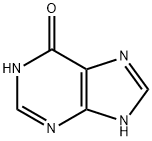
What is 6-Hydroxypurine?
Description
Hypoxanthine is a naturally occurring purine derivative and intermediate in the synthesis of uric acid. It is elevated in the spinal fluid of patients with Lesch-Nyhan syndrome, a metabolic disorder whose symptoms include cerebral palsy, cognitive deficits, motor dysfunction, self-mutilation, and hyperuricemia. Injection of hypoxanthine (10 μM) increases succinate dehydrogenase and complex II activities and decreases cytochrome c oxidase activity, resulting in neuroenergetic impairment, ATP depletion, and cellular apoptosis in rat striatum. It is also used to induce hyperuricemia in mice for use in the development of hypouricemic agents.
Chemical properties
White to off-white powder
The Uses of 6-Hydroxypurine
A naturally occurring purine derivative. Pharmaceuticals, Intermediates & Fine Chemicals
The Uses of 6-Hydroxypurine
Hypoxanthine, is used as a marker for energy perturbation in hypoxia/ ischemia. The compound has been used in studies as in indicator, along with uric acid and allantoin , of in vivo free radical reactions. It has been also used in DNA studies to investigate the destabilizing effect it has on DNA duplexes containing hypoxanthine as a base, in a gas phase versus a liquid phase. Hypoxanthine has also been used in studies along with 8-oxoguanine nucleotides to investigate their interaction with human DNA pol ? (DNA polymerase alpha) and DNA polymerase I from Bacillus stearothermophilus. It is also used as a pharmaceutical intermediate.
The Uses of 6-Hydroxypurine
Hypoxanthine is a nutrient additive for a variety of cell culture applications involving bacterial, parasite (Plasmodium falciparum) and animal cells. Hypoxanthine is a component of selection media used in hybridoma technologies.
What are the applications of Application
Hypoxanthine is a marker for energy perturbation in hypoxia/ ischemia
Definition
ChEBI: A purine nucleobase that consists of purine bearing an oxo substituent at position 6.
General Description
Hypoxanthine (6-hydroxypurine), a purine derivative is a naturally occurring compound. It is the deaminated form of adenine and a breakdown product of adenosine monophosphate (AMP).
Biochem/physiol Actions
Hypoxanthine?is capable of stimulating cell death. It can also induce reactive oxygen species (ROS). It results in endothelial dysfunction via apoptosis, stimulated by oxidative stress.
Safety Profile
Moderately toxic by intraperitoneal route. An experimental teratogen. When heated to decomposition it emits toxic fumes of Nox
Purification Methods
Crystallise it from hot water and dry it at 105o. [Beilstein 26 II 252, 26 III/IV 2081.]
Properties of 6-Hydroxypurine
| Melting point: | >300 °C (lit.) |
| Boiling point: | 250.36°C (rough estimate) |
| Density | 1.4295 (rough estimate) |
| refractive index | 1.8500 (estimate) |
| storage temp. | 2-8°C |
| solubility | 1 M NaOH: 25 mg/mL |
| form | powder |
| pka | 8.7(at 25℃) |
| color | Colorless to yellow to brown, darken on storage with no loss of purity |
| Odor | Odorless |
| Water Solubility | practically insoluble |
| Merck | 14,4869 |
| BRN | 5811 |
| CAS DataBase Reference | 68-94-0(CAS DataBase Reference) |
| NIST Chemistry Reference | Hypoxanthine(68-94-0) |
| EPA Substance Registry System | Hypoxanthine (68-94-0) |
Safety information for 6-Hydroxypurine
| Signal word | Warning |
| Pictogram(s) |
 Exclamation Mark Irritant GHS07 |
| GHS Hazard Statements |
H302:Acute toxicity,oral H315:Skin corrosion/irritation H319:Serious eye damage/eye irritation H335:Specific target organ toxicity, single exposure;Respiratory tract irritation |
| Precautionary Statement Codes |
P261:Avoid breathing dust/fume/gas/mist/vapours/spray. P270:Do not eat, drink or smoke when using this product. P271:Use only outdoors or in a well-ventilated area. P280:Wear protective gloves/protective clothing/eye protection/face protection. P312:Call a POISON CENTER or doctor/physician if you feel unwell. P330:Rinse mouth. P302+P352:IF ON SKIN: wash with plenty of soap and water. P304+P340:IF INHALED: Remove victim to fresh air and Keep at rest in a position comfortable for breathing. P305+P351+P338:IF IN EYES: Rinse cautiously with water for several minutes. Remove contact lenses, if present and easy to do. Continuerinsing. P403+P233:Store in a well-ventilated place. Keep container tightly closed. |
Computed Descriptors for 6-Hydroxypurine
| InChIKey | FDGQSTZJBFJUBT-UHFFFAOYSA-N |
6-Hydroxypurine manufacturer
Vijaya Pharma And Life Science
ARRAKIS INDUSTRIES LLP
New Products
(S)-3-Aminobutanenitrile hydrochloride 4-Methylphenylacetic acid N-Boc-D-alaninol N-BOC-D/L-ALANINOL Tert-butyl bis(2-chloroethyl)carbamate N-octanoyl benzotriazole 3-Morpholino-1-(4-nitrophenyl)-5,6-dihydropyridin- 2(1H)-one Furan-2,5-Dicarboxylic Acid S-2-CHLORO PROPIONIC ACID ETHYL ISOCYANOACETATE 2-Bromo-1,3-Bis(Dimethylamino)Trimethinium Hexafluorophosphate 4-IODO BENZOIC ACID 3-NITRO-2-METHYL ANILINE 1-(2,4-DICHLOROPHENYL) ETHANAMINE (2-Hydroxyphenyl)acetonitrile 4-Bromopyrazole 5,6-Dimethoxyindanone 2-(Cyanocyclohexyl)acetic acid 4-methoxy-3,5-dinitropyridine 1-(4-(aminomethyl)benzyl)urea hydrochloride 2-aminopropyl benzoate hydrochloride diethyl 2-(2-((tertbutoxycarbonyl)amino) ethyl)malonate tert-butyl 4- (ureidomethyl)benzylcarbamate Ethyl-2-chloro((4-methoxyphenyl)hydrazono)acetateRelated products of tetrahydrofuran
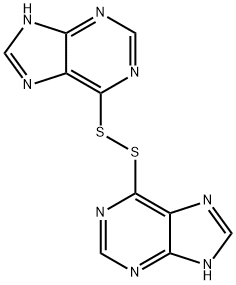
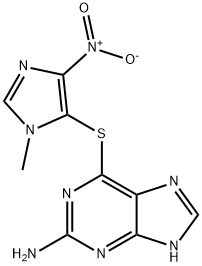
![Ethanone, 1-[6-[(1-methyl-4-nitro-1H-imidazol-5-yl)thio]-9H-purin-9-yl]-](https://img.chemicalbook.in/CAS/20210305/GIF/304441-05-2.gif)
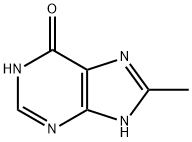
![9H-Purine, 9-β-D-arabinofuranosyl-6-[(1-methyl-4-nitro-1H-imidazol-5-yl)thio]-](https://img.chemicalbook.in/CAS/20211123/GIF/120416-99-1.gif)
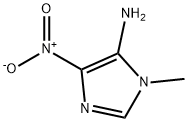
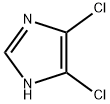
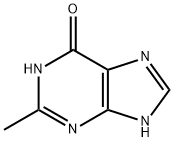
You may like
-
 Hypoxanthine 98%View Details
Hypoxanthine 98%View Details -
 Hypoxanthine CAS 68-94-0View Details
Hypoxanthine CAS 68-94-0View Details
68-94-0 -
 Hypoxanthine extrapure CAS 68-94-0View Details
Hypoxanthine extrapure CAS 68-94-0View Details
68-94-0 -
 Hypoxanthine 98% CAS 68-94-0View Details
Hypoxanthine 98% CAS 68-94-0View Details
68-94-0 -
 Hypoxanthine CAS 68-94-0View Details
Hypoxanthine CAS 68-94-0View Details
68-94-0 -
 HYPOXANTHINE For Biochemistry CAS 68-94-0View Details
HYPOXANTHINE For Biochemistry CAS 68-94-0View Details
68-94-0 -
 HYPOXANTHINE 99% CAS 68-94-0View Details
HYPOXANTHINE 99% CAS 68-94-0View Details
68-94-0 -
 Didanosine Related Compound A CAS 68-94-0View Details
Didanosine Related Compound A CAS 68-94-0View Details
68-94-0